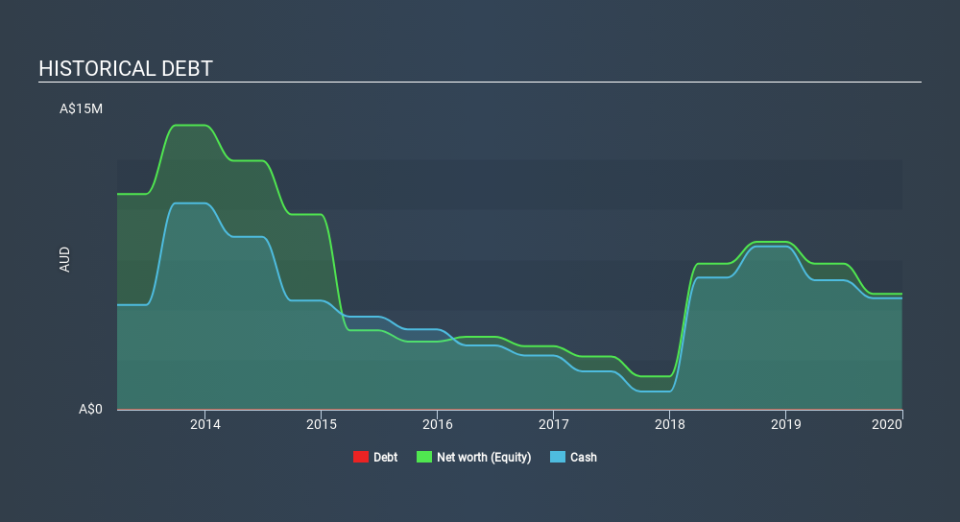Patrys (ASX:PAB) Is In A Good Position To Deliver On Growth Plans

We can readily understand why investors are attracted to unprofitable companies. For example, although software-as-a-service business Salesforce.com lost money for years while it grew recurring revenue, if you held shares since 2005, you'd have done very well indeed. Having said that, unprofitable companies are risky because they could potentially burn through all their cash and become distressed.
So should Patrys (ASX:PAB) shareholders be worried about its cash burn? In this article, we define cash burn as its annual (negative) free cash flow, which is the amount of money a company spends each year to fund its growth. The first step is to compare its cash burn with its cash reserves, to give us its 'cash runway'.
View our latest analysis for Patrys
Does Patrys Have A Long Cash Runway?
A cash runway is defined as the length of time it would take a company to run out of money if it kept spending at its current rate of cash burn. As at December 2019, Patrys had cash of AU$5.6m and no debt. In the last year, its cash burn was AU$2.5m. So it had a cash runway of about 2.2 years from December 2019. Arguably, that's a prudent and sensible length of runway to have. You can see how its cash balance has changed over time in the image below.
Can Patrys Raise More Cash Easily?
Generally speaking, a listed business can raise new cash through issuing shares or taking on debt. Commonly, a business will sell new shares in itself to raise cash to drive growth. We can compare a company's cash burn to its market capitalisation to get a sense for how many new shares a company would have to issue to fund one year's operations.
Patrys has a market capitalisation of AU$15m and burnt through AU$2.5m last year, which is 17% of the company's market value. As a result, we'd venture that the company could raise more cash for growth without much trouble, albeit at the cost of some dilution.
How Risky Is Patrys's Cash Burn Situation?
Given it's an early stage company, we don't have a lot of data with which to judge Patrys's cash burn. Having said that, we can say that its cash runway was a real positive. The bottom line is that we think its cash burn seems fairly reasonable, given it is still chasing growth. On another note, Patrys has 4 warning signs (and 2 which don't sit too well with us) we think you should know about.
If you would prefer to check out another company with better fundamentals, then do not miss this free list of interesting companies, that have HIGH return on equity and low debt or this list of stocks which are all forecast to grow.
If you spot an error that warrants correction, please contact the editor at editorial-team@simplywallst.com. This article by Simply Wall St is general in nature. It does not constitute a recommendation to buy or sell any stock, and does not take account of your objectives, or your financial situation. Simply Wall St has no position in the stocks mentioned.
We aim to bring you long-term focused research analysis driven by fundamental data. Note that our analysis may not factor in the latest price-sensitive company announcements or qualitative material. Thank you for reading.

 Yahoo Finance
Yahoo Finance 
